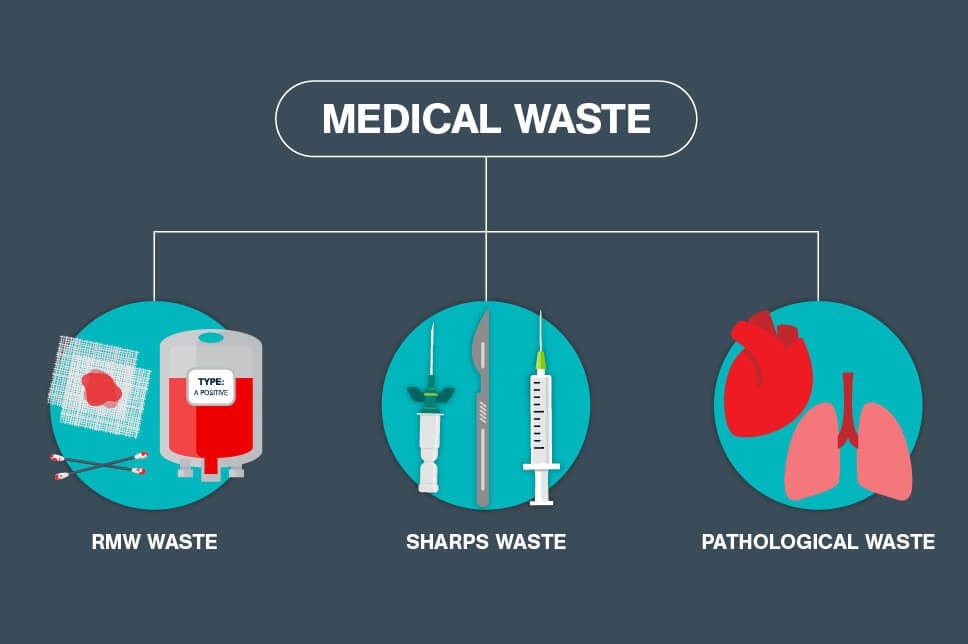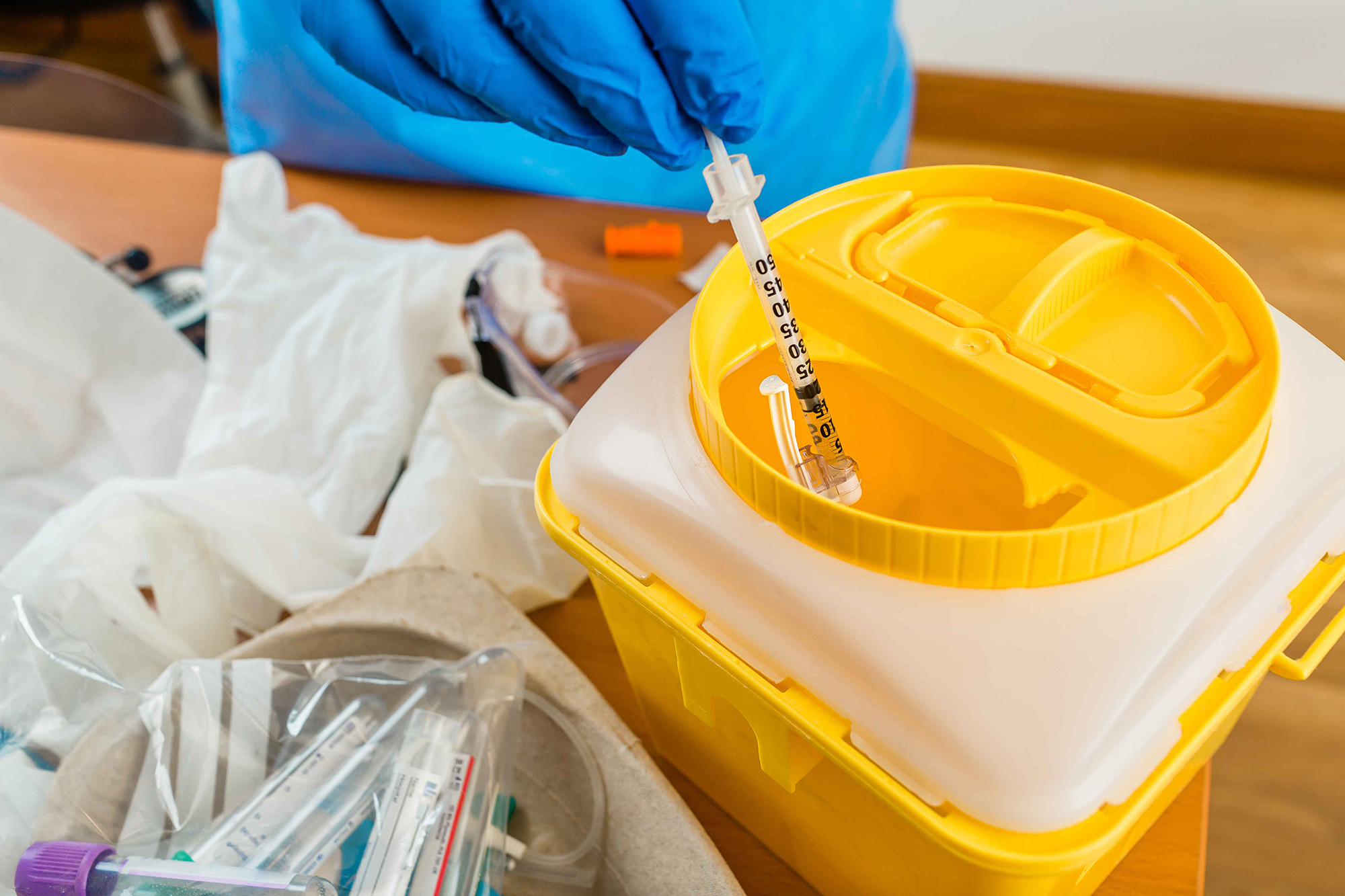Effective and Liable Medical Waste Removal: Protecting People and the World
Effective Methods of Medical Waste Disposal
Reliable approaches of clinical garbage disposal are important in keeping public wellness and environmental security. Medical waste, including sharps, pathological waste, and pharmaceutical waste, have to be taken care of and thrown away correctly to avoid the spread of infections and protect the environment. This needs adherence to rigorous regulations and the execution of expert waste monitoring practices.
Appropriate segregation of clinical waste, safe and safe storage, efficient therapy and disinfection methods, and environmentally-friendly disposal alternatives are key parts of an efficient medical waste disposal system. Specialist waste administration services play an essential function in making certain conformity with regulations and lessening the risks related to incorrect disposal. By using these techniques, healthcare facilities can add to a more secure and cleaner setting while guarding the health of the community.
Proper Partition of Clinical Waste
Appropriate partition of clinical waste is crucial for guaranteeing the secure and effective disposal of these potentially hazardous products. Clinical waste refers to any type of waste produced throughout healthcare activities, such as health centers, facilities, laboratories, and study centers. It consists of a variety of products, such as made use of needles, syringes, polluted dressings, ended or unused medications, and organic materials.
By setting apart medical waste, medical care centers can minimize the threat of infections, injuries, and environmental contamination. The process includes categorizing waste right into various types, such as sharps, infectious waste, pharmaceutical waste, and non-hazardous waste. Each type requires specific handling, packaging, and disposal methods to protect against exposure to medical care workers, waste administration employees, and the general public.
To guarantee correct segregation, medical care centers should develop clear standards and provide sufficient training to team member. This includes enlightening employees on the different waste groups, proper packaging strategies, and making use of appropriate containers - WasteX Medical Waste Disposal. Additionally, clear signs and color-coding systems can be carried out to assist in the identification and segregation of different waste types
Safe and Secure Storage Space of Medical Waste
Safe and safe and secure storage of medical waste is critical for maintaining the honesty and control of potentially hazardous products. Proper storage not just secures health care workers and the basic public from exposure to dangerous compounds yet also prevents ecological contamination.
To make certain risk-free storage, medical facilities ought to stick to specific guidelines. Waste must be stored in puncture-resistant and watertight containers that are classified appropriately - medical waste disposal.
Appropriate segregation of clinical waste is also crucial for risk-free storage space. Different sorts of waste, such as sharps, contagious products, and pharmaceutical waste, need to be divided to stop cross-contamination. This segregation can be achieved through making use of color-coded containers or bins.
Routine surveillance and inspection of the storage area are important to determine any kind of potential risks or breaches. This consists of checking for indicators of damages or damage in the containers, making certain proper air flow, and checking temperature and humidity degrees.
Effective Therapy and Disinfection Techniques

One typically used therapy technique is autoclaving, which entails subjecting the waste to high-pressure heavy steam at temperatures above 121 levels Celsius. This process properly kills microorganisms and destroys contagious representatives, making the waste secure for further disposal. One more technique is incineration, which involves shedding the waste at high temperatures. Incineration not only gets rid of bacteria but also minimizes the waste quantity via combustion.
Chemical sanitation is another reliable method for dealing with medical waste. This technique includes using anti-bacterials such as chlorine compounds, phenolic compounds, or hydrogen peroxide to kill or suspend pathogens (WasteX Medical Waste Disposal). Chemical sanitation is usually used for liquid waste, such as lab samples or physical fluids
In recent times, different therapy approaches such as microwave disinfection, irradiation, and biological treatment have additionally obtained focus. These techniques supply advantages such as minimized environmental influence and power consumption compared to conventional techniques.
Environmentally-friendly Disposal Options
In the realm of clinical waste disposal, considering environmentally-friendly alternatives is critical. Healthcare centers create a substantial amount of waste, consisting of transmittable products, pharmaceuticals, and chemicals, which can posture severe dangers to human wellness and the setting otherwise managed properly. Thankfully, there are numerous environmentally-friendly disposal alternatives available that can assist mitigate these dangers.
Reusing medical waste involves setting apart and refining particular products for reuse or repurposing. Additionally, some medical care centers have actually carried out recycling programs for particular medical tools or tools, more minimizing waste generation.
This method entails converting clinical waste right into energy with processes like incineration or anaerobic food digestion. Anaerobic food digestion, on the other hand, breaks down organic waste in the lack of oxygen, generating biogas that can be made use of for electrical energy or warm generation.

Advantages of Professional Waste Administration Solutions
One considerable advantage of specialist waste management services is the boosted effectiveness in handling and getting rid of of clinical waste. Medical care facilities generate a considerable quantity of waste that includes unsafe products, such as sharp objects, infected things, and potentially contagious waste. medical waste removal service. Incorrect handling and disposal of medical waste pose significant health risks to workers, individuals, and the general public. By making use of expert waste monitoring solutions, medical care centers can make sure that all medical waste is managed and disposed of appropriately, minimizing the threat of contamination and the spread of illness.
Expert waste administration solutions employ experienced and seasoned workers who are experienced regarding the laws and guidelines for medical waste disposal. They have access to specific devices and tools that enable them to handle various sorts of clinical waste safely and successfully. These solutions also have well-established procedures and methods in position to guarantee that waste is segregated, packaged, transferred, and disposed of in conformity with regional, state, and federal regulations.
Additionally, expert waste monitoring solutions can give healthcare centers with thorough waste administration remedies. They can supply services such as waste collection, transportation, disposal, and treatment, customized to the specific needs and requirements of the center. This removes the worry of taking care of waste inside, permitting healthcare staff to concentrate on giving top quality patient treatment.
Verdict
Finally, reliable techniques of clinical waste disposal include proper partition, risk-free storage, treatment and disinfection, and environmentally-friendly disposal alternatives (WasteX Medical Waste Disposal). These methods guarantee the safe handling and management of clinical waste, protecting against the spread of infections and safeguarding the environment. Expert waste administration solutions play a critical function in implementing these approaches and making certain compliance with guidelines. By complying with these methods, medical care centers can add to a much safer and healthier setting for both people and the neighborhood.
Clinical waste, including sharps, pathological waste, and pharmaceutical waste, need to be dealt with and disposed of properly to stop the spread of infections and safeguard the atmosphere.Appropriate partition of medical waste, risk-free and safe and secure storage space, effective therapy and disinfection approaches, and environmentally-friendly disposal options are essential elements of an effective medical waste disposal system. The procedure entails categorizing waste into different kinds, such as sharps, contagious waste, pharmaceutical waste, and non-hazardous waste. By making use of professional waste administration services, healthcare facilities can make certain that all clinical waste is managed and disposed of correctly, decreasing the risk of contamination and the spread of diseases.
Professional waste administration services use seasoned and trained workers who are well-informed concerning the guidelines and guidelines for medical waste disposal.